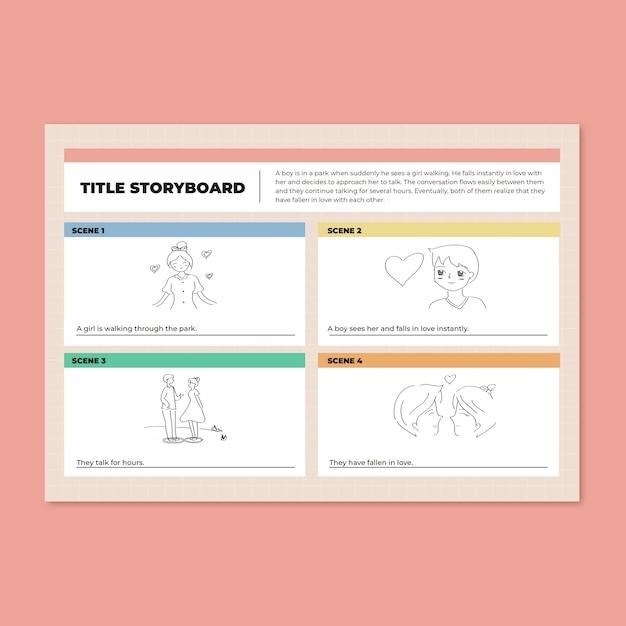five rites of rejuvenation pdf
The Five Tibetan Rites of Rejuvenation
The Five Tibetan Rites is a system of exercises first publicized by Peter Kelder in a 1939 booklet titled The Eye of Revelation. The system is also referred to as The Five Rites, The Five Tibetans and The Five Rites of Rejuvenation. Kelder described the rites as having the potential to restore youthfulness through changing ones internal …
Introduction
The Five Tibetan Rites of Rejuvenation, a set of ancient Tibetan exercises, have gained widespread popularity as a path to improved health, vitality, and longevity. These five simple yet powerful movements, often referred to as “The Five Tibetans” or “The Five Rites,” are believed to have originated in the Himalayan monasteries and were passed down through generations of Tibetan monks. The rites are said to harmonize the body’s energy centers, known as chakras, promoting a balanced flow of life force, or prana, leading to a sense of well-being, rejuvenation, and increased energy levels. The exercises are not a replacement for traditional medical treatment but can be a valuable complement to a healthy lifestyle, promoting physical, mental, and spiritual well-being.
The Five Tibetan Rites are a unique blend of physical movement and spiritual practice. They are not about building muscle or achieving peak physical fitness. Instead, they focus on restoring balance within the body’s energy system. By stimulating the chakras and promoting energy flow, the rites are believed to revitalize the body, mind, and spirit, leading to a sense of youthful vibrancy and overall wellness. The rites can be practiced by people of all ages and fitness levels, making them an accessible and beneficial practice for anyone seeking a holistic approach to health and well-being.
This guide provides a comprehensive overview of the Five Tibetan Rites, exploring their history, origins, the five movements, their potential benefits, and how to practice them safely and effectively. Whether you are new to the rites or a seasoned practitioner, this guide will equip you with the knowledge and understanding to unlock the transformative power of these ancient Tibetan practices and embark on a journey towards greater vitality and well-being.
History and Origin
The Five Tibetan Rites of Rejuvenation, while often attributed to ancient Tibetan traditions, have a somewhat shrouded history. Their origins are not definitively documented, and the information we have relies heavily on accounts passed down through oral tradition and later publications. The most widely accepted narrative traces the rites back to a British Army Colonel named Bradford, who, in the early 20th century, encountered a group of Tibetan monks in a remote Himalayan monastery. Intrigued by their youthful vigor and apparent longevity, Colonel Bradford learned the exercises from these monks, which he later shared with the world. The rites were initially described in a book titled “The Eye of Revelation” by Peter Kelder, published in 1939, which is considered the primary source for much of what we know about the Five Tibetan Rites.
It is important to note that the exact origins of the rites remain somewhat speculative. Some scholars believe that the rites might have evolved from ancient yogic practices, adapted and integrated into Tibetan traditions over centuries. Others suggest they might have been influenced by other forms of spiritual and physical practices prevalent in the Himalayan region. Despite the lack of definitive historical evidence, the Five Tibetan Rites have gained significant popularity as a practice for rejuvenation and well-being, and their effectiveness is supported by anecdotal evidence and personal testimonies from individuals who have incorporated the rites into their daily routines.

The Five Tibetan Rites are not merely a set of physical exercises; they are a holistic practice that encompasses physical movement, energy work, and spiritual awareness. Their roots likely lie in ancient traditions of self-discovery and the pursuit of a balanced and harmonious life. While the exact origins may remain a mystery, the enduring appeal of the Five Tibetan Rites lies in their potential to promote physical vitality, mental clarity, and spiritual growth, making them a valuable tool for individuals seeking a holistic approach to well-being.
The Five Rites
The Five Tibetan Rites are a sequence of five distinct exercises, each designed to work on specific areas of the body and energy systems. These rites are not intended to be performed as a strenuous workout but rather as a gentle, flowing series of movements that encourage flexibility, balance, and energy circulation. The sequence is typically performed in a specific order, with each rite repeated a certain number of times, building up gradually as the practitioner gains strength and stamina.
The first rite involves spinning in a clockwise direction, a movement believed to stimulate the chakras and encourage energy flow. The second rite focuses on back-bending, strengthening the spine and promoting flexibility. The third rite involves a downward-facing position, strengthening the arms and shoulders while also stretching the back and hamstrings. The fourth rite, a leg raise, works on the abdominal muscles, core strength, and circulation. The final rite involves a gentle backbend and a forward bend, emphasizing flexibility and balance.
While these rites might appear simple at first glance, their effectiveness lies in their synergy. Each movement complements the others, creating a holistic practice that addresses physical, mental, and energetic aspects of well-being. The Five Tibetan Rites are not merely a set of exercises; they are a mindful practice that encourages deep breathing, conscious movement, and a connection with the body’s natural rhythms. By incorporating the Five Tibetan Rites into your daily routine, you can embark on a journey of self-discovery, rejuvenation, and a more balanced and harmonious life.
Benefits of the Five Tibetan Rites
The Five Tibetan Rites, when practiced consistently, are believed to offer a wide range of benefits, impacting both physical and mental well-being. One of the primary benefits often attributed to these rites is their potential to promote rejuvenation and slow down the aging process. By stimulating the endocrine system and balancing energy flow within the body, the rites are thought to revitalize cells and organs, contributing to a youthful appearance and increased vitality.
Beyond their anti-aging potential, the Five Tibetan Rites are also recognized for their ability to enhance flexibility, strength, and balance. The series of movements stretches and strengthens muscles, improves joint mobility, and promotes coordination, contributing to a more agile and resilient body. Furthermore, these rites are believed to have a positive impact on mental clarity, reducing stress and anxiety while fostering a sense of calm and focus. By aligning the chakras and promoting energy flow, the rites can help to create a sense of inner peace and harmony.
The Five Tibetan Rites are also often associated with improved sleep quality, increased energy levels, and a stronger immune system. By regulating hormone production and promoting a sense of well-being, these rites can contribute to a more restful sleep and a natural boost in energy throughout the day. Moreover, the practice is thought to strengthen the body’s natural defenses, making it more resilient to illness and disease.
How to Practice the Five Tibetan Rites
The Five Tibetan Rites are a series of exercises designed to be performed in a specific sequence. Each rite involves a unique movement that targets different areas of the body and energy centers. It is important to start slowly and gradually increase the number of repetitions as your body becomes more accustomed to the practice. A typical routine involves performing each rite 21 times, but beginners can start with fewer repetitions and work their way up. Here’s a general guide to practicing the Five Tibetan Rites⁚
The Spin⁚ Stand with feet shoulder-width apart, arms outstretched, and palms facing downwards. Spin clockwise while keeping your head level and eyes fixed on a point in front of you. This rite is designed to stimulate the energy centers and promote balance.
The Kneeling Backbend⁚ Kneel on the floor with knees hip-width apart and hands resting on the floor behind you. Arch your back upwards, lifting your head and chest while keeping your arms straight. This rite strengthens the spine and improves flexibility;
The Table Top⁚ Start on your hands and knees, with hands directly under your shoulders and knees hip-width apart. Extend one leg straight behind you and the opposite arm forward, keeping your back straight. Hold for a few seconds, then switch sides. This rite increases strength and balance.
The Leg Raise⁚ Lie on your back with arms at your sides and legs straight. Inhale and lift your legs straight up towards the ceiling, keeping your back flat. Exhale and lower your legs back down. This rite strengthens the core and improves circulation.
The Downward-Facing Dog⁚ Start on your hands and knees, with hands shoulder-width apart and knees hip-width apart. Lift your hips up and back, forming an inverted V-shape with your body. Hold for a few seconds, then return to the starting position. This rite stretches the entire body and improves posture.
Common Questions and Concerns
While the Five Tibetan Rites are generally considered safe for most individuals, there are some common questions and concerns that arise regarding their practice. Here are a few of the most frequently asked questions⁚
Are the Five Tibetan Rites suitable for everyone?
While the Five Tibetan Rites are generally considered safe for most individuals, they may not be appropriate for everyone. People with certain medical conditions, such as back problems, neck injuries, or osteoporosis, should consult with a healthcare professional before starting the practice. Pregnant women and individuals with severe injuries should also avoid the rites.
How often should I practice the Five Tibetan Rites?
It is generally recommended to practice the Five Tibetan Rites once a day, ideally in the morning. The ideal frequency will vary depending on individual fitness levels and goals. However, it is important to listen to your body and rest when needed.
What if I feel dizzy or nauseous during the practice?
If you experience dizziness or nausea during the practice, it is important to stop immediately and rest. This is especially important during the spinning rite, as it can cause a temporary change in blood pressure. If you feel any discomfort, reduce the number of repetitions or take a break until you feel better.
Are there any other things I should be aware of?
It is essential to listen to your body and not push yourself too hard, especially when starting out. It is also important to stay hydrated and wear comfortable clothing. Remember, the Five Tibetan Rites are a journey, not a race. Be patient, consistent, and focus on your personal growth.
The Five Tibetan Rites of Rejuvenation, a system of ancient exercises, offer a compelling path towards improved health, vitality, and well-being. While their origins are shrouded in mystery, their potential benefits are well-documented and continue to attract individuals seeking a holistic approach to wellness. The rites, when practiced consistently and with mindful attention, can contribute to increased flexibility, strength, balance, and a sense of inner peace.
However, it is crucial to approach the practice with a balanced perspective. The Five Tibetan Rites are not a magic bullet for all ailments, and they should not be seen as a replacement for professional medical advice. Individuals with pre-existing health conditions should consult with a qualified healthcare practitioner before embarking on this or any other exercise regimen. Moreover, the effectiveness of the rites may vary from person to person, depending on individual factors and the level of commitment to the practice.
Ultimately, the Five Tibetan Rites offer a unique opportunity to explore the connection between physical movement and spiritual well-being. Whether seeking to enhance physical fitness, improve energy levels, or simply cultivate a greater sense of self-awareness, these ancient practices provide a valuable tool for embarking on a journey of self-discovery and rejuvenation.






